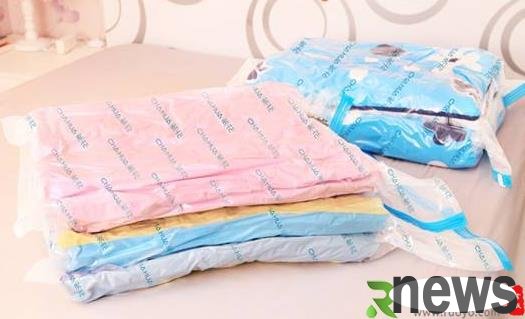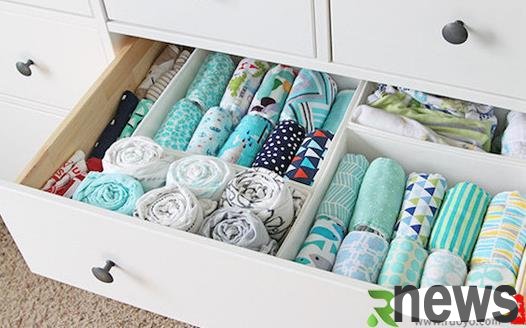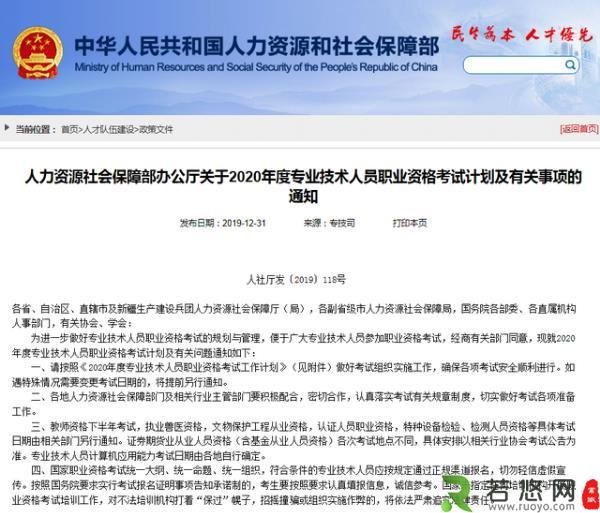Vacuum compression bags bring convenience to life. Tips for purchasing and using vacuum compression bags
Vacuum compression bags are loved by friends because of their space-saving characteristics, which bring convenience to life. Below, the editor will introduce you in detail how to choose and use vacuum compression bags.

The purpose of vacuum compression bags
Compression bags are already very commonly used in our daily lives, but we may still think that compression bags are the vacuum bags of food that used to be, and we never thought that our clothes and quilts can also be kept like food. Moreover, clothing compression bags are more stringent than our food vacuum bags, and the quality requirements are also very high, especially the requirements for materials are stricter, so you must see the materials clearly when buying compression bags.
Material: Nylon + polyethylene + nylon (PA+PE+PA) (new process material, five layers copolymerized, super soft and thickened to prevent air leakage).
Working principle: Pump the air inside the quilt and clothing (like a sponge will shrink) to reduce the volume. Use atmospheric pressure to flatten the originally expanded quilt and other items to isolate the outside air to save space and achieve the effects of dust, mildew, moisture and insect prevention. However, although it is a vacuum compression bag, it is not absolutely vacuum. Nowadays, products generally use vacuum cleaners or manual pumps to extract the air in the bag. They are a new member of the storage family. Vacuum compression bags have moisture-proof, mildew-proof, moth-proof, and odor-proof. Use the air extraction tool to extract the air in the compression bag and the quilt in the clothing, so as to reduce the volume and increase the storage space!

The purpose and usage method of vacuum compression bag
The main functions are:
1. Save space, because it is vacuum compression, the air in the middle is taken out of the expansion item, and the volume becomes smaller. To make a simple metaphor, it is equivalent to flattening the sponge with your hands.
2. It will not become moldy, insects or get damp. This effect can be achieved because it is isolated from the outside air. When traveling, it is convenient to carry clothes and bedding.
A: Use a vacuum cleaner or vacuum pump to pump air, which is easy to operate and convenient!
B: Can prevent fleas, mold, moisture, stench, etc., and keep clothes clean and preserved.
C: After the clothing, the storage space becomes larger after compression.

How to use vacuum compression bags?
1. Before putting the quilt in the compression bag, dry the quilt in the clothes, then fold it into a shape that is easy to store and put it in. Try to put it in the bag, at least several centimeters away from the sealing zipper.
2. Before pulling the zipper, check whether the zipper seal is clean and whether there are fine fibers or dust. The fine fibers or dust may reduce the sealing of the compression bag, causing air leakage in the compression bag. If so, please wipe it clean with a rag stained with water.
3. Install the slider, press the slider zipper with your hands, and slowly and lightly pull to the other end of the zipper. When it is pulled to two-thirds, squeeze or fold the clothes or quilt, so that most of the air is discharged, quickly use the slider to pull the remaining one-third of the part up (this can save a lot of time and effort when pumping with a manual pump).
4. Press the slide with your hands and slide it back and forth several times on the zipper to ensure that the zipper is truly sealed.
5. Use a manual air pump to extract air: Open the air nozzle cover, aim the air pump at the air nozzle opening, and pull the piston to extract air (when pumping a large-capacity bag, the air pump is not necessary to remove the pump and cover the cover during rest, and the gas will not be sucked back).
6. Use a vacuum cleaner to extract air: Open the air nozzle cover, aim the straw of the vacuum cleaner at the mouth of the air nozzle, and open the vacuum cleaner to quickly extract and compress.
7. Open the closed zipper and take out the quilt to dry it to restore it to its original state.
Precautions: Please avoid heat sources, fire, and do not directly contact the compression bag with hard objects such as needles and nails to avoid damage to the bag. Do not put food, animals, etc. into bags. Do not move the bag close to heat sources, fires, etc., and do not use nails, needles and other hard objects to directly contact the compression bag to avoid damage to the bag. Types of vacuum compression bags: Vacuum compression bags can be divided into seven types according to the bag type and usage function. The first category: planar three-seal type, which is the most common in general tradition. The bag body has three-side sealing and one side can be opened with a strip type, and exhaust is carried out through external exhaust utensils such as air pumps or vacuum cleaners.
Category 2: hanging type, combining the suction valve of the traditional plane three-seal vacuum compression bag with the hook to form a clothing compression bag that can be hung and stored.
The third category: three-dimensional type, adding an additional layer of expandable film to the bottom of the traditional planar three-seal vacuum compression bag to form a three-dimensional clothing compression bag. Changing the appearance of the previous pure plane and large area has become a storage tool that can conform to the space design and can be stacked in multiple layers.
Category 4: Rolling type. This type of compression bag is generally small. The gas is discharged by hand rolling the compression bag. Suitable for use when there is no air extraction tool, example: when traveling.
Category 5: Sit-press type, generally three-dimensional, and gas is discharged through heavy objects. Suitable for use when there is no air extraction tool, example: when traveling.
Category 6: Compression storage box, combining traditional general vacuum compression bags with non-woven storage boxes, changing the irregular and ugly appearance of the compression bag caused by vacuum absorption after traditional vacuum storage. In addition, the non-woven storage box not only provides a neat and beautiful appearance, but mainly protects the weakness of the compression bag being easily scratched and leaked, and provides perfect clothing storage.
Category 7: Dual-purpose type, combining the operation method of plane three-seal type and rolling type, suitable for general household use and outdoor use.

How to choose a compression bag?
1. Look at the material of vacuum compression bags: The main materials of vacuum compression bags sold on the market are: PA+PE (polyamide + polyethylene), PE+PET and MOPE bags. Among them, the compression bags made of PA+PE are the best quality. It is recommended to choose this kind of bag first. The bags made of this material are soft, flexible, durable, and have high adhesion. They do not change their shape when they are low, so they are not easy to leak. They are generally available for several years. PET+PE bags have better adhesiveness and are relatively cheaper, but the disadvantage of this bag is that they are relatively brittle and not soft enough, especially at low temperatures, which will harden and cause easy to break, which is more likely to leak, and are not suitable for use in the north; MOPE bags, the common MOPE bags in supermarkets are this kind of bags. What gives you the feeling is that they are particularly soft, as if they are better than other compression bags. In fact, this is not the case. This kind of bag has poor adhesion and generally has more air leakage.
2. Look at the thickness of the vacuum compression bag: The thickness of the vacuum compression bag is generally expressed by “ wire ” 1 wire = 0.01mm, the thickness ranges from 6-13 wires. The thicker the thickness, the better. Thin compression bags have better stretchability and flexibility, and thick compression bags are more wear-resistant. Therefore, if you don’t move frequently, you can choose 6-8 silk threads. If you need to move frequently, it is recommended to 9-11 silk threads.
3. Inspection of vacuum compression bags: When purchasing a compression bag, you must carefully check whether the appearance of the product has obvious defects, mainly damage, dirt, air leakage, etc. Air leakage must be carefully checked. If the air leakage is leaked, the compression bag will be scrapped. Air leakage check can be used to open the compression bag and put air into the compression bag. You can blow air in with a fan, then use a zipper to tighten the sealing port of the compression bag to ensure that the sealing port is sealed. Then compress the compression bag by hand. If there is no air leakage, it can be used. If there is air leakage, it should be replaced or returned with the merchant.




